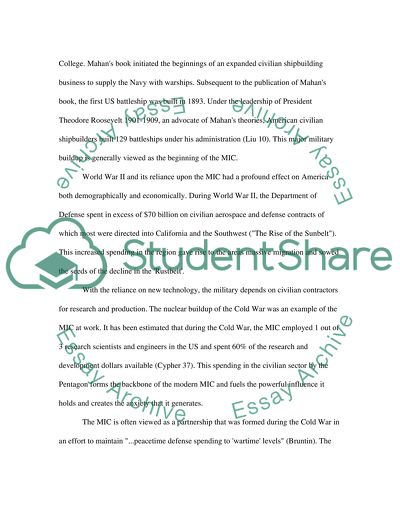Cite this document
(“Military Industrial Complex Essay Example | Topics and Well Written Essays - 1500 words”, n.d.)
Military Industrial Complex Essay Example | Topics and Well Written Essays - 1500 words. Retrieved from https://studentshare.org/miscellaneous/1518737-military-industrial-complex
Military Industrial Complex Essay Example | Topics and Well Written Essays - 1500 words. Retrieved from https://studentshare.org/miscellaneous/1518737-military-industrial-complex
(Military Industrial Complex Essay Example | Topics and Well Written Essays - 1500 Words)
Military Industrial Complex Essay Example | Topics and Well Written Essays - 1500 Words. https://studentshare.org/miscellaneous/1518737-military-industrial-complex.
Military Industrial Complex Essay Example | Topics and Well Written Essays - 1500 Words. https://studentshare.org/miscellaneous/1518737-military-industrial-complex.
“Military Industrial Complex Essay Example | Topics and Well Written Essays - 1500 Words”, n.d. https://studentshare.org/miscellaneous/1518737-military-industrial-complex.


